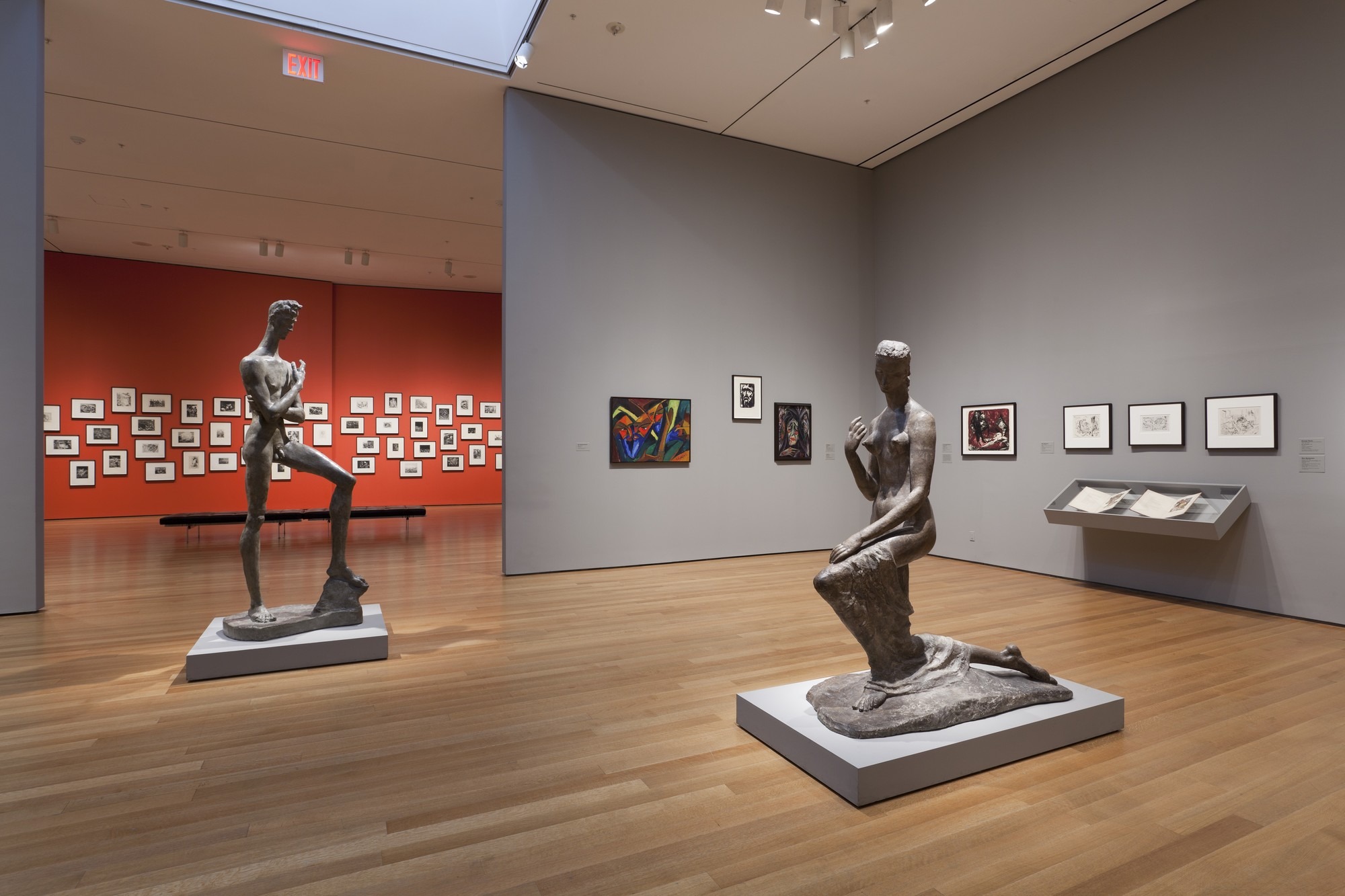German Expressionism: The Graphic Impulse
27 Mar - 11 Jul 2011

Installation view of the exhibition, "German Expressionism: The Graphic Impulse"
March 27, 2011–July 11, 2011. IN2154.27. Photograph by Jonathan Muzikar.
March 27, 2011–July 11, 2011. IN2154.27. Photograph by Jonathan Muzikar.
From E. L. Kirchner to Max Beckmann, artists associated with German Expressionism in the early decades of the twentieth century took up printmaking with a collective dedication and fervor virtually unparalleled in the history of art. The woodcut, with its coarse gouges and jagged lines, is known as the preeminent Expressionist medium, but the Expressionists also revolutionized the mediums of etching and lithography to alternately vibrant and stark effect. This exhibition, featuring approximately 250 works by some thirty artists, is drawn from MoMA’s outstanding holdings of German Expressionist prints, enhanced by selected drawings, paintings, and sculptures from the collection. The graphic impulse is traced from the formation of the Brücke artists group in 1905, through the war years of the 1910s, and extending into the 1920s, when individual artists continued to produce compelling work even as the movement was winding down.
The exhibition takes a broad view of Expressionism, highlighting a diverse array of individuals—from Oskar Kokoschka and Vasily Kandinsky to Erich Heckel and Emil Nolde—who nonetheless shared visual and thematic concerns. Their works reflect a period of intense social and aesthetic transformation, and several themes of continuing resonance emerge. These include a focus on urban experience, an uncompromising approach to the body and sexuality, and an abiding preoccupation with nature, religion, and spirituality. Most pivotal for these years, however, was the experience of World War I. The war and its aftermath are the subject of works by a range of artists, including Otto Dix, whose series of fifty searing etchings, The War, was based on his own service in the trenches; Käthe Kollwitz, in a portfolio of seven woodcuts focusing on the devastation felt by the families left behind; and Max Beckmann, whose lithographic series, Hell (1919), confronts the violence and decadence in Berlin during the immediate postwar period.
In addition to a publication and a major website on German Expressionism, the exhibition will mark the culmination of a major four-year grant from The Annenberg Foundation to digitize, catalogue, and conserve all of the approximately three thousand Expressionist works on paper in the Museum’s collection.
The exhibition takes a broad view of Expressionism, highlighting a diverse array of individuals—from Oskar Kokoschka and Vasily Kandinsky to Erich Heckel and Emil Nolde—who nonetheless shared visual and thematic concerns. Their works reflect a period of intense social and aesthetic transformation, and several themes of continuing resonance emerge. These include a focus on urban experience, an uncompromising approach to the body and sexuality, and an abiding preoccupation with nature, religion, and spirituality. Most pivotal for these years, however, was the experience of World War I. The war and its aftermath are the subject of works by a range of artists, including Otto Dix, whose series of fifty searing etchings, The War, was based on his own service in the trenches; Käthe Kollwitz, in a portfolio of seven woodcuts focusing on the devastation felt by the families left behind; and Max Beckmann, whose lithographic series, Hell (1919), confronts the violence and decadence in Berlin during the immediate postwar period.
In addition to a publication and a major website on German Expressionism, the exhibition will mark the culmination of a major four-year grant from The Annenberg Foundation to digitize, catalogue, and conserve all of the approximately three thousand Expressionist works on paper in the Museum’s collection.
